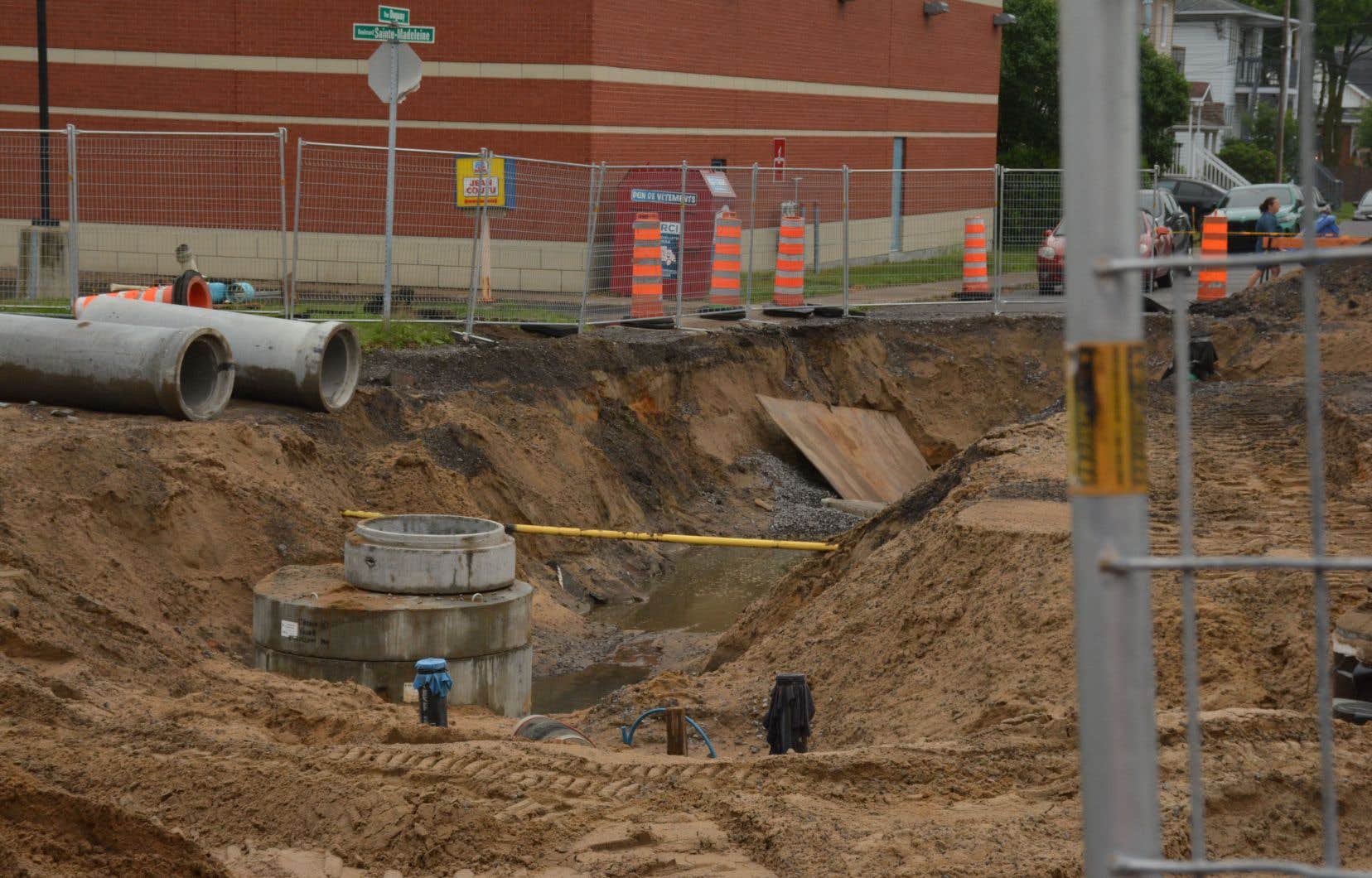Trois-Rivières is spending tens of millions of dollars to protect itself against the consequences of torrential rains. Retention basins, restrictions on paving and the creation of a “fourth river” are among the many projects on the City Hall’s agenda. A first action plan was presented to Trois-Rivières residents this week.
The remains of the hurricane Beryl put Sonia-Karine Larocque’s teams on alert on Thursday. The interim co-director of engineering for the municipality was ultimately more scared than hurt. But this is only a postponement for the next flood.
In Trois-Rivières, as elsewhere, sewers are overflowing more and more, a consequence of increasingly intense floods. Managing torrential rain has become the most important “theme” that municipal engineers are tackling, she confirms.
“I remember we had a big rain in 2005. We called it “the big rain of the Trois-Rivières Grand Prix”. After that, there was Irene [en 2011]. We said to ourselves that it would happen once. Except that last year, we had three, including one in December! It’s really unfortunate, these are human tragedies.”
The bill for sewer backups has ballooned just as much. Since 2021, four “0-100 year recurrence” events have hit Trois-Rivières, and the City has had to pay out more than $1.1 million in compensation. And Mme Larocque fears that the frequency of these disasters will increase “exponentially” in the years to come.
To address these future misfortunes, the municipality hired its first full-time engineer last month to adapt its water management network to climate change. The city is banking on creating a rainwater drainage network separate from the sewers. Work began this summer, when the municipality injected $15 million to resurface some 800 metres of street in the eastern part of its territory.
This amount is, however, only a drop in the ocean of narrow pipes installed everywhere until the 1990s, concedes the city’s genius co-director. “We won’t be able to redo everything.” […] We are talking about around half a billion over 20 years to be invested in sanitary water alone.”
A canal along Highway 55
A “fourth river” should also soon see the light of day in the Trois-Rivières-Ouest sector, which is particularly congested during heavy rains. This catchy statement taken up by politicians and the media, however, refers more to the creation of a large ditch along Highway 55 than to a real river.
For $8 million, this “river” must be dug as best as possible this fall. The work is delayed by the presence of a large Énergir gas pipe that is obstructing the flow, and moving this obstacle is causing delays of several months. Developing this canal must be the municipality’s first “short-term” project in order to facilitate the flow of rainwater in the area, observes Sonia-Karine Larocque.
Another major project will expand a retention basin located on the edge of the UQTR. Its bill: $6.5 million.
Until this work begins, the City is imposing restrictions on the “mineralization” of the soil in certain neighbourhoods of Trois-Rivières-Ouest. Any asphalting of more than 25 m² will have to be subject to compensatory measures, otherwise it will be prohibited, detailed the municipal representatives on Wednesday during a citizens’ meeting. “It will not improve [la situation]but it will stop getting worse,” Sonia-Karine Larocque weighs in an interview.
“Clearly not enough”
All this fuss about adapting to climate change won’t be enough, say representatives of Eau-tage, a group of 200 citizens struggling with repeated flooding. “Every time it rains, I get anxious,” says Marc Lépine, co-founder of the group, who has already experienced three sewer backups in a few years. This week’s public meeting clearly didn’t reassure him.
“For the citizen, it’s going to be restrictive. If you want to do a project, you’re going to have to provide certain evidence to satisfy the City. All citizens are going to restrict themselves, deprive themselves, stop making investments. Property values won’t be as good, he fears. On the other hand, the big booming sector — District 55 — is not affected. [par ces restrictions]. […] The city wants to build.”
This commercial district, where huge parking lots spread out around shopping centres, is in fact excluded from the recent regulation. According to Marc Lépine, the growth of this concrete and asphalt neighbour is making the situation worse in the neighbouring residential neighbourhoods. However, city engineers deny these claims.
Despite everything, the representative of Eau-tage is pleased to see that the problem is finally being taken seriously by the authorities. “This is the first time that we have seen an openness on the part of a mayor. […] Will it help? Maybe. But, it’s clearly not enough.”
This story is supported by the Local Journalism Initiative, funded by the Government of Canada.
